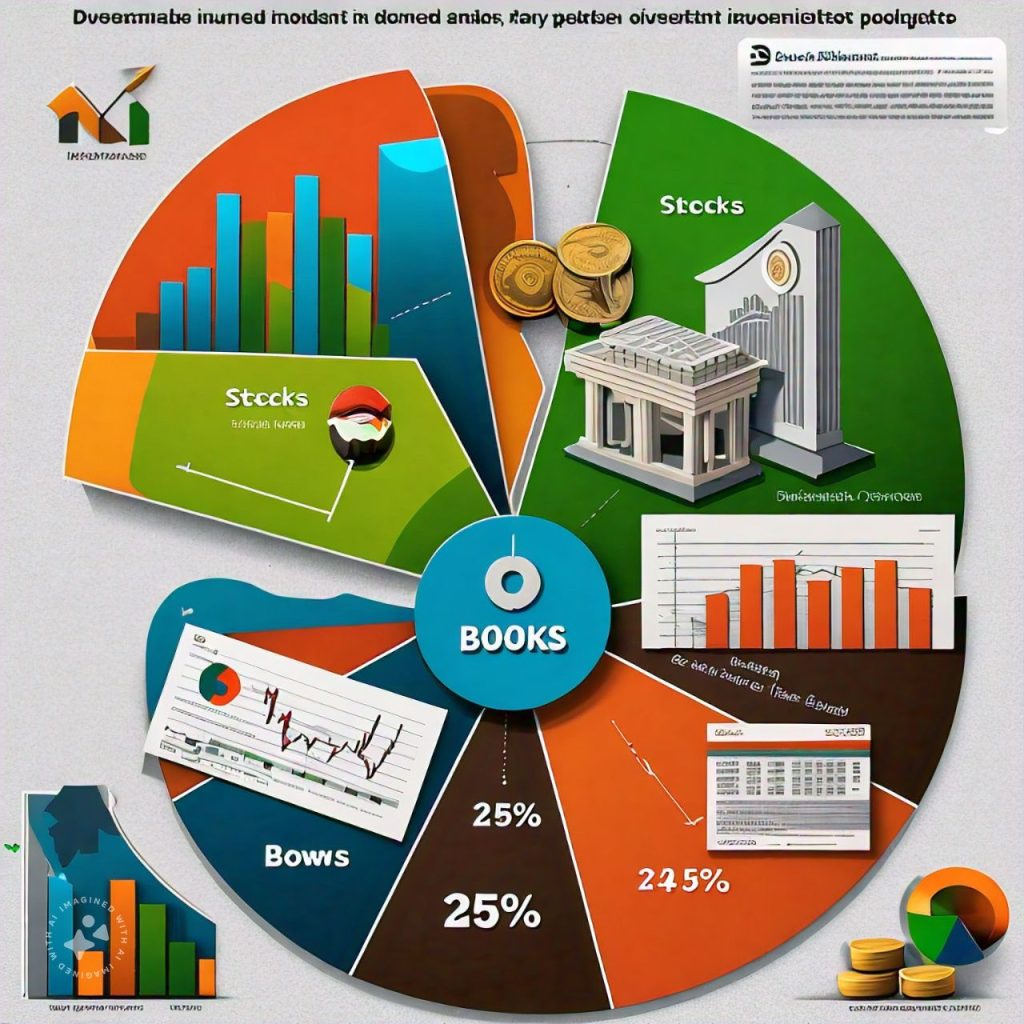Introduction
Investing is a powerful way to build wealth over time. However, for beginners, the process can seem overwhelming. Starting with clear goals and a solid plan can help you make confident and informed investment choices. Here are some foundational tips to help beginners start their investment journey.
Start with Clear Financial Goals
Short-Term vs. Long-Term Goals
Before investing, set specific financial goals. Clarify what you want to achieve: Are you building a retirement fund, setting aside money for a down payment, or saving for a major purchase? Having a clear purpose helps guide your investment decisions and keeps you motivated to stick with your plan.
Consider the timeline for each goal. Long-term goals, like retirement, often allow you to take on higher-risk investments, such as stocks, which may offer greater growth potential over time. However, for short-term goals or those you want to reach in the next few years, safer investment options, like bonds or savings accounts, can help protect your funds from sudden market fluctuations.
Risk tolerance is also crucial. Assess your comfort level with market ups and downs to choose investments that align with both your timeline and ability to withstand risk. With a solid understanding of your goals and risk tolerance, you can create a balanced, effective investment strategy that keeps you on track toward financial success.
Build an Emergency Fund First
Why Having Savings is Key Before Investing
Ensure you have an emergency fund covering three to six months’ worth of expenses before you begin investing. This fund serves as a financial cushion, allowing you to handle unexpected expenses, like medical bills or car repairs, without dipping into your investments. Having a readily available safety net also lets you approach investing with a longer-term mindset, free from the worry of needing immediate access to your funds.
An emergency fund should be kept in a highly liquid and low-risk account, such as a savings account or a money market fund, so it’s easily accessible when needed. Building this reserve gives you a solid foundation for your financial well-being, enabling you to make investment choices with greater confidence and focus on long-term growth

Understand Basic Investment Types
Stocks, Bonds, ETFs, and Real Estate
Start by learning about different types of investments:
- Stocks offer potential for high returns but come with higher risks.
- Bonds are generally safer but have lower returns.
- ETFs and Index Funds pool together multiple stocks or bonds for diversified investments.
- Real Estate can provide stable income but often requires more upfront capital.
Diversify Your Portfolio
Reducing Risk Through Asset Allocation
Diversification is a key strategy in managing investment risk by spreading your investments across various asset types, such as stocks, bonds, real estate, and other asset classes. By allocating your money across different types of investments, you reduce the impact that any single asset’s performance can have on your overall portfolio. This approach helps to balance your portfolio’s risk, as losses in one area can potentially be offset by gains in another.
A diversified portfolio not only includes a mix of asset types but can also vary within each category. For example, within stocks, you might diversify further by investing across different sectors like technology, healthcare, and energy, or by including both domestic and international stocks. In bonds, you might consider a range of maturities and credit qualities. This level of diversification can help smooth out returns and protect against market volatility, making your portfolio more resilient over time.
By strategically diversifying, you’re better positioned to achieve consistent growth, even in fluctuating market conditions. While diversification doesn’t eliminate all risks, it’s an effective way to manage them and helps keep you on track toward your financial goals.
Learn About Risk and Return
Balancing Risk Based on Your Comfort Level
Understand that investments offering higher potential returns typically come with higher risks. Recognizing this relationship is essential for choosing the right investment strategy that aligns with your financial goals and comfort with risk. By assessing your personal risk tolerance, you can find a balance between stability and growth that suits your needs.
Conservative investments, like bonds or savings accounts, prioritize stability and preservation of capital. These options generally carry lower risk, making them suitable for short-term goals or for investors who are risk-averse. On the other hand, aggressive investments, such as individual stocks or growth-focused mutual funds, may experience more fluctuation but can offer higher returns over the long term, making them a good fit for investors with higher risk tolerance and longer investment horizons.
Your ideal investment mix should reflect your goals, timeframe, and ability to endure potential losses. By understanding the risk-return trade-off, you can make more informed decisions, building a portfolio that aligns with both your current financial situation and your future aspirations.

Start Small with Low-Cost Investments
ETFs, Index Funds, and Fractional Shares
Start your investment journey with low-cost options like ETFs (exchange-traded funds) or index funds. These types of investments provide instant diversification across various stocks or bonds, spreading out risk while helping you build a balanced portfolio. Plus, they generally come with lower fees than actively managed funds, allowing you to keep more of your returns over time.
Another advantage is that many investment platforms now offer fractional shares, which allow you to buy portions of expensive stocks. With fractional shares, you can own a piece of high-value companies, like tech giants or blue-chip stocks, even if you’re only investing a small amount. This flexibility makes it easier to enter the market and gradually build a diversified portfolio at your own pace.
Starting with cost-effective, diversified investments can be a smart way to grow your wealth steadily without high initial costs, making it an ideal choice for beginners and seasoned investors alike.
Set Up Automatic Investments
Dollar-Cost Averaging Explained
Setting up automatic investments is a smart way to consistently grow your portfolio. By putting a fixed amount into your investments on a regular schedule, you’re using a strategy called dollar-cost averaging. This approach removes the stress of trying to ‘time the market’ and helps you invest steadily, regardless of market conditions.
With dollar-cost averaging, you buy more shares when prices are low and fewer when prices are high, averaging out the cost over time. This technique reduces the impact of market volatility and helps you avoid the temptation to make impulsive investment decisions based on short-term market swings.
Automatic investments make saving and growing your portfolio easier and keep you on track toward your financial goals. Over the long term, consistent contributions can have a powerful impact, building wealth gradually with less stress and effort.
Invest in Your Retirement Early
Advantages of 401(k)s, IRAs, and Roth IRAs
Retirement accounts provide valuable tax advantages that can significantly enhance your wealth over the long term. Contributing to tax-advantaged accounts like an employer-sponsored 401(k) or individual retirement accounts (IRAs), including traditional and Roth IRAs, can help your money grow more efficiently through tax savings and compounding.
A 401(k) plan, often with employer matching, allows you to invest pre-tax dollars, which lowers your taxable income for the year. The funds grow tax-deferred until retirement, when you start making withdrawals, usually in a lower tax bracket. IRAs offer similar tax benefits, with traditional IRAs also allowing tax-deferred growth, while Roth IRAs grow tax-free, as contributions are made with after-tax dollars.
These tax advantages can compound your savings over decades, allowing your investments to grow faster than they would in a regular taxable account. By starting contributions early and consistently, you harness the power of compounding growth and set yourself on a strong path toward a financially secure retirement.
Educate Yourself Continuously
Using Books, Blogs, and Courses to Learn
Investing is a journey of continuous learning. Markets evolve, new financial products emerge, and strategies shift, so staying informed is essential to making better decisions. Resources such as books, blogs, online courses, and podcasts offer valuable insights into market trends, effective strategies, and a deeper understanding of different financial products.
Books by seasoned investors can teach you the fundamentals, while financial blogs and newsletters provide updates on the latest market developments. Online courses, often led by experts, allow you to deepen your knowledge in specific areas, from asset allocation to advanced trading strategies. Podcasts are also great for picking up new ideas and listening to expert discussions on current economic issues and investment opportunities.
The more you learn, the more confident and informed you’ll feel, empowering you to make sound financial decisions. Education strengthens your understanding of how to build wealth over time, manage risks, and navigate market cycles, enabling you to grow as an investor with each new piece of knowledge.

Avoid Emotional Decision-Making
Staying Steady in Market Ups and Downs
Investing is a long-term commitment, where patience and discipline often yield the best results. Markets inevitably experience ups and downs, and it’s easy to feel pressured to make quick changes when values fluctuate. However, reacting emotionally to market swings can lead to costly mistakes, such as selling low during downturns or chasing trends at high prices.
Staying invested through market fluctuations allows you to benefit from long-term growth and the power of compounding. Historically, markets have trended upward over the long term, and by holding onto a diversified portfolio, you give your investments the time they need to recover from temporary setbacks and capitalize on growth.
By focusing on your long-term goals rather than short-term market noise, you’re more likely to stay the course and achieve meaningful returns. Remember that disciplined, steady investing is often the best way to build wealth, helping you ride out the waves and avoid making decisions based on fear or impulse.
Conclusion
Starting your investment journey may seem daunting, but with a few simple steps, you can build wealth gradually. Be patient, stay disciplined, and continue to learn about different investment options to make well-informed decisions.
FAQs
1. How much should a beginner invest?
Start with whatever amount you’re comfortable with. Even $50 a month can grow significantly over time due to compound interest.
2. What is the best investment for beginners?
Low-cost ETFs or index funds are popular for beginners because they offer diversification and are relatively low risk.
3. Can I start investing without much money?
Yes, many platforms offer fractional shares, allowing you to invest small amounts in stocks or ETFs. Look for brokers with low or no minimum deposit requirements.
4. How do I know what my risk tolerance is?
Your risk tolerance depends on your financial situation, goals, and comfort level. A general rule: the longer your investment horizon, the more risk you can afford to take.
5. Should I invest or pay off debt first?
It depends on the interest rate of your debt. Paying off high-interest debt first often makes more sense than investing, as it saves you from costly interest charges.






